Cased micropiles are integral to modern geotechnical engineering, tackling complex foundation challenges with ease.
Their versatility and strength allow for deep foundation solutions in the most restrictive conditions, underscoring their growing importance.
Geotechnical professionals recognize cased micropiles as pivotal for navigating weak soil layers and delivering reliable, resilient support structures.
Cased micropiles epitomize technological advancement in subterranean engineering, enhancing load-bearing capabilities with robust design.
They adeptly conform to varying geotechnical conditions, becoming indispensable for projects demanding precision and adaptability in foundation support.
With enhanced stability and structural integrity, cased micropiles excel, embodying modern construction's pinnacle of ingenuity.
Cased micropiles are engineered for stability and strength, consisting of grouted steel reinforcement within a robust steel casing, adept at bearing significant loads.
Serving as a bridge between surface soils and deep strata, they reliably transmit loads through variable ground conditions, ensuring foundational security in diverse geotechnical contexts.
Cased micropiles surpass standard types, ensuring optimal load-bearing capacity through deeper layers of strata.
Their installation facilitates adaptability, cutting through weak or collapsible soils to reach competent substrata, proving indispensable in constrained or sensitive environments, without extensive disturbance.
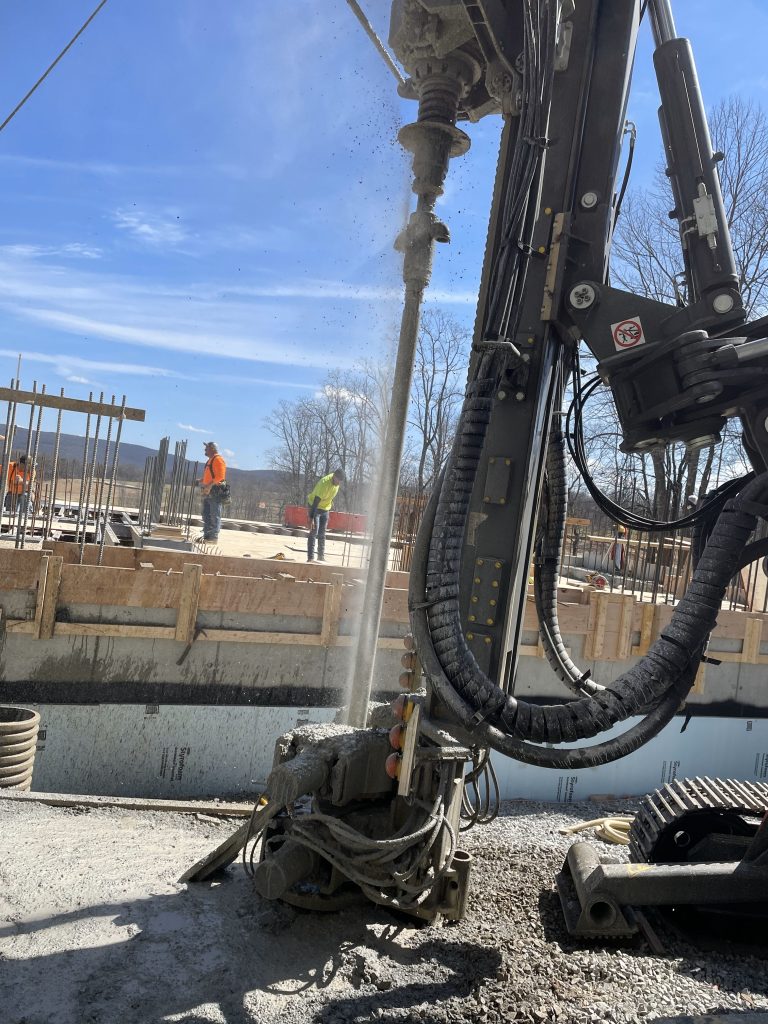
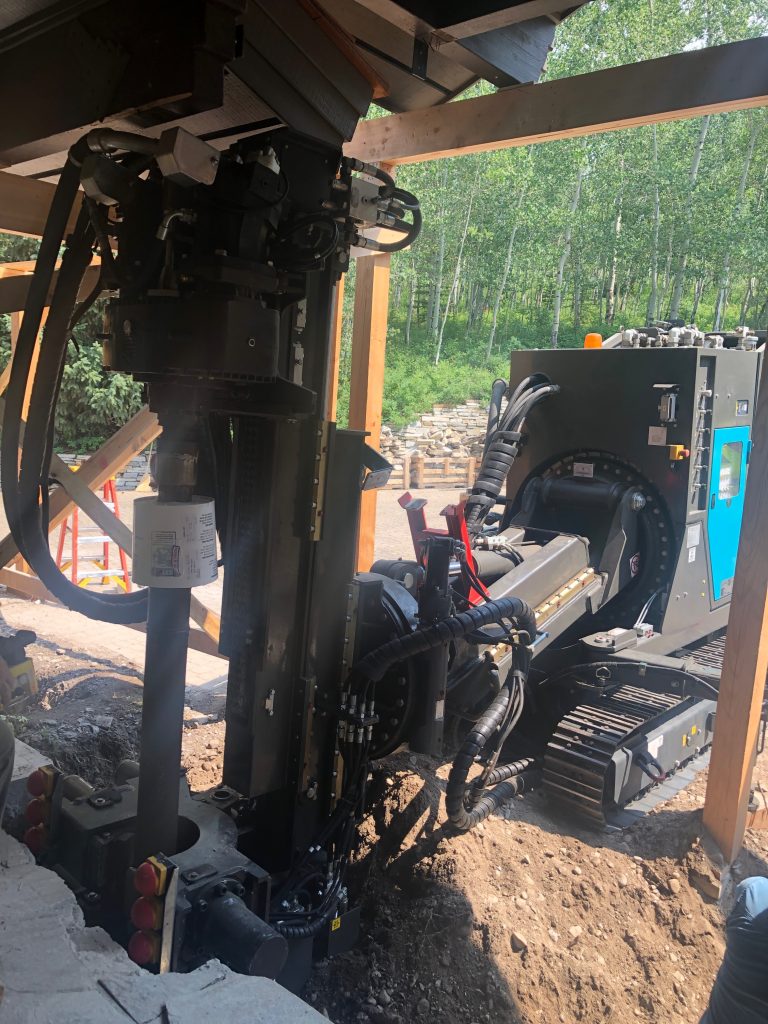
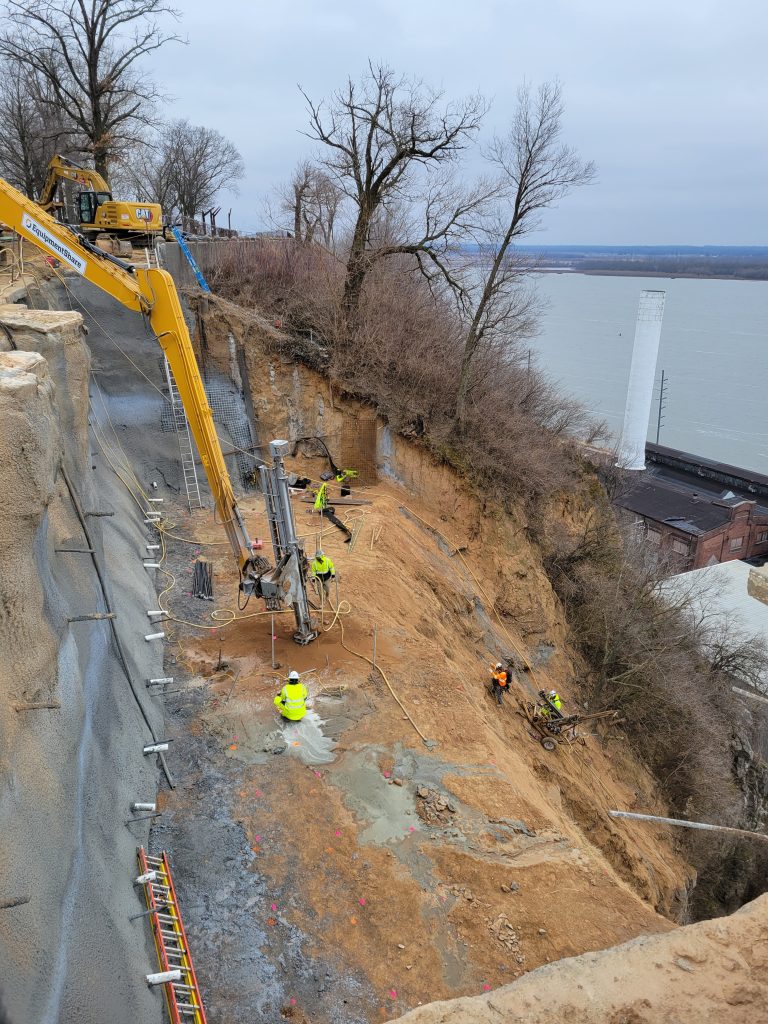
Cased micropiles boast a formidable fusion of strength and versatility, thriving in geotechnically challenging environments.
Their high-strength steel casing is a bulwark against subsurface challenges, bearing significant axial and lateral loads.
Cased micropiles epitomize modern construction's commitment to efficiency, significantly reducing vibration and environmental impacts during installation.
Cased micropiles offer superior adaptability, even in geologically complex conditions, surpassing the capabilities of standard piling methods.
Reduced vibration means less disruption to sensitive sites during the installation process.
Their installation precision allows for optimal placement in challenging strata, achieving stable support structures.
Rapid deployment of cased micropiles is feasible even in confined or hard-to-reach locales.
With smaller diameters, they require less excavation and generate a reduced volume of spoil compared to standard piles.
Faster installation times translate into reduced labor costs and shorten overall project schedules.
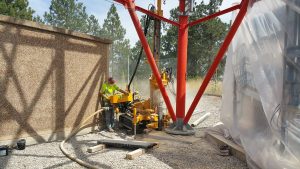 Cased micropiles streamline foundation solutions across various projects, from seismic retrofits to infrastructure expansion, where traditional piling methods could falter. Their efficient installation process minimizes downtime and accelerates the construction timeline, delivering a swift transition from groundwork to above-ground construction phases. Reduced spoil production and lower material consumption further underscore their economic and environmental prudence.
Cased micropiles streamline foundation solutions across various projects, from seismic retrofits to infrastructure expansion, where traditional piling methods could falter. Their efficient installation process minimizes downtime and accelerates the construction timeline, delivering a swift transition from groundwork to above-ground construction phases. Reduced spoil production and lower material consumption further underscore their economic and environmental prudence.
In the realm of urban renewal or hillside developments, the application of cased micropiles is a masterstroke of engineering agility. Their slender profile penetrates with minimal disturbance, exemplifying a "surgical precision" approach. Whether it's to brace against the pressures exerted by a high-rise or to anchor a slope against landslides, cased micropiles are the foundation's answer when time, space, and sustainability command equal importance in the project's execution.
Overcoming geotechnical adversity is paramount.
Construction challenges evolve with the complexity of designs and the unpredictability of subsurface conditions. Cased micropiles are invaluable when confronting highly variable ground conditions, from liquefiable soils to tight urban spaces requiring low-vibration installation methods. In these scenarios, cased micropiles stand as pillars of adaptability, countering the forces that threaten structural integrity and safety.
Mitigating risks while ensuring project viability.
The right foundation choice underscores project success – cased micropiles offer that aptitude. They uniquely adapt to diverse geological settings, accommodating a broad spectrum of structural requirements while ensuring stability. This adaptability is why specialist geotechnical engineers regularly prescribe cased micropiles where other foundation options may falter.
Their versatility streamlines construction across scenarios.
Cased micropiles embody a confluence of technological innovation and practical foresight. They tick all the boxes for modern construction: strong, reliable, and agile, deftly supporting complex projects against geotechnical unknowns. With burgeoning construction demands, they stand ready to address challenges that demand robust foundation support in the ever-evolving landscape of civil engineering.
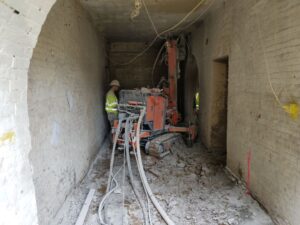
Cased micropiles demonstrate a compelling cost-effectiveness, reducing overall project expenses without compromising structural requirements. Their smaller footprint leads to a diminution in material waste, aligning profit with ecological stewardship.
They economize resource allocation, curbing excess consumption.
The installation precision of cased micropiles limits the disturbance of the surrounding habitat, thus preserving the integrity of the construction site's ecosystem. This precision cutbacks remediation efforts post-construction, optimizing cost-savings.
Reduced vibrations from driving or drilling promote an undisturbed site.
Efficiency translates to profitability when cased micropiles are employed. Their expedited implementation minimizes downtime, slashing labor costs without the collateral damage of excessive resource use associated with larger pile systems.
Expediting project timelines while safeguarding ecological health.
Profit margins are bolstered by swift mobilization capabilities. Small-scale drilling equates to fewer deliveries and storage needs, amplifying project throughput without engendering the habitat that encases the construction arena.
Indeed, cased micropiles are a confluence of fiscal sensibility and environmental consideration. Their streamlined deployment optimizes timelines while preserving the natural contours of the project’s locale.
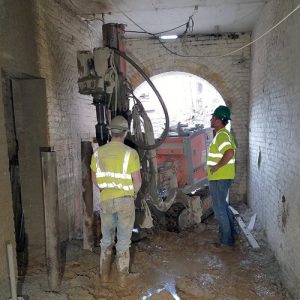 In a large city's historic district, cased micropiles were pivotal in the renovation of a 19th-century brick structure. Their implementation fortified the foundation without disrupting the sensitive urban infrastructure or compromising historic integrity.
In a large city's historic district, cased micropiles were pivotal in the renovation of a 19th-century brick structure. Their implementation fortified the foundation without disrupting the sensitive urban infrastructure or compromising historic integrity.
Seismic retrofitting in coastal area required non-invasive methods. Cased micropiles fit the bill, providing necessary support without excessive drilling.
A commercial facility in swampy terrain leveraged cased micropiles to offset concerns of subsidence. The deployment was exceptionally quick, ensuring minimal environmental impact and business interruption.
Remote pipeline support structures, threatened by permafrost, stood stabilized upon installing cased micropiles. These proved to withstand incredibly harsh conditions while offering a fast, reliable solution.
The restoration of a river embankment showcased cased micropiles' efficacy in resisting erosive forces, proving their structural support capacities under dynamic hydraulic actions.
Lastly, a solar farm on undulating terrain utilized cased micropiles to provide a stable platform for the expansive array, mastering challenging soils with a lean environmental footprint.
Cased micropiles require meticulous geotechnical evaluation to ascertain subsoil profiles and bearing capacities. The design integrates geomechanical data, ensuring dependable load transfer mechanisms and long-term stability.
To determine the specific dimensions and materials of cased micropiles, engineers conduct detailed calculations. These include assessing steel casing strength, grout characteristics, and reinforcement requirements, tailored to the unique demands of the project site.
Construction of cased micropiles involves precision drilling and placement, with adaptations for site-specific conditions. Effective collaboration amongst project teams is critical to align with design specifications and ensure structural integrity.
Proper grouting techniques are essential for the effective load transfer in cased micropiles, which anchor and stabilize the structure.
Secondary grouting can significantly amplify the load-bearing capabilities of cased micropiles.
The interplay between grout, casing, and soil is pivotal in dispersing structural loads securely into the ground strata.
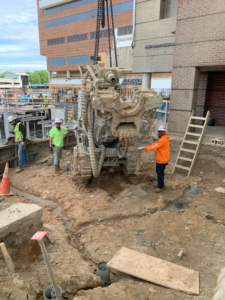
Geotechnical engineering often demands operation in locales where traditional equipment cannot function effectively or efficiently.
The selection of specialized equipment is crucial to navigate and conquer the myriad of challenges faced on-site.
In these environments, each piece of machinery plays a pivotal role in executing micropile installation safely and efficiently.
Properly designed cased micropiles are integral to bear significant tensile and shear stress. They must offer rigidity to withstand forces that could potentially elongate or shear the pile under load. The steel casing’s inherent tensile and shear strength becomes fundamental in these design considerations, as it directly influences the micropile's load-bearing attributes.
For tension load design, the primary focus is on developing sufficient skin friction between the pile and the soil. This relies on an accurate understanding of geotechnical properties, ensuring that the reinforcement within the casing can effectively anchor the structure. Detailed analysis of soil-pile interaction is crucial, involving the evaluation of the micropile's diameter, steel grade, and embedment depth to achieve the desired tension capacity.
When considering shear loads, the emphasis shifts to the pile's ability to resist lateral forces. This involves initiatives to enhance the composite action of the casing, grout, and steel reinforcement. These elements work synergistically to provide the necessary stiffness and strength to counteract potential shear planes or bending moments that may occur due to lateral pressures or seismic activity.
Understanding the synergistic interaction between pile components under varying loads is key. It’s not just about steel grade or casing thickness; it’s a holistic approach towards how each element contributes under tensile and shear forces. When these factors are meticulously considered, cased micropiles provide a robust foundation system, protecting structures from adverse effects of dynamic loads, and guaranteeing long-term integrity and stability.
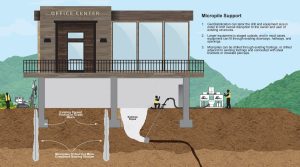 In the selection process for cased micropiles, it's imperative to meticulously assess the subsoil characteristics and the structure's load requirements. This focused approach necessitates a comprehensive geotechnical investigation, including soil borings and in-situ tests, tailored to determine the most effective micropile configuration. Parameters such as soil type, presence of groundwater, and potential obstructions dictate whether full-length casing is necessary, and to what extent reinforcement is required to achieve the targeted load-bearing capacity.
In the selection process for cased micropiles, it's imperative to meticulously assess the subsoil characteristics and the structure's load requirements. This focused approach necessitates a comprehensive geotechnical investigation, including soil borings and in-situ tests, tailored to determine the most effective micropile configuration. Parameters such as soil type, presence of groundwater, and potential obstructions dictate whether full-length casing is necessary, and to what extent reinforcement is required to achieve the targeted load-bearing capacity.
When implementing cased micropiles, the stepwise strategy starts with the design phase, where simulations and load tests forecast performance under specific scenarios. This phase should seamlessly transition to the execution stage with accurate guidance for drilling and grouting operations, ensuring adherence to the design while accommodating site-specific conditions. Installation accuracy is critical, involving ongoing inspections and adjustments as needed, maintaining strict compliance with technical specifications. Furthermore, considering constructability issues early can avert costly delays and guarantee the realization of the micropile's calculated capacities in the actual field conditions.
Consider access and soil conditions first.
In scenarios involving weak or collapsible soils, traditional piling methods may prove ineffective or hazardous. Cased micropiles offer a reliable alternative, circumventing issues related to soil stability and providing a robust solution for ensuring the integrity of the foundation or structure being supported. Particularly in urban environments or locations with sensitive existing infrastructure, their use minimizes the risk of subsidence and associated damage.
They excel in constrained spaces.
For projects with limited overhead or lateral access - such as urban infill sites or inside buildings - cased micropiles offer an adaptable and less intrusive option compared to larger-diameter drilling or pile driving.
Their versatility addresses complex geotechnical challenges.
Given the evolution of construction projects in 2023, with increasing complexity and environmental sensitivity, cased micropiles emerge as a versatile and considerate choice, offering high-strength support while mitigating impacts on surrounding structures and environments.
Cased micropiles effectively penetrate diverse soil conditions and negotiate subterranean obstructions with precision.
Cased micropile technology offers a swift response to unexpected subsurface challenges.
Their strategic installation minimizes disturbance to contiguous soil strata and existing structures, ensuring stability and safety.
Cased micropiles offer custom solutions, accurately engineered to meet specific project demands while delivering significant cost efficiencies.
The adaptability of cased micropiles to varying geotechnical conditions can substantially reduce the requirement for extensive soil stabilization measures, which traditionally incur higher costs. Project engineers can evaluate soil profiles and tailor cased micropile designs accordingly, optimizing material usage and enhancing overall economic efficiency. By leveraging smaller drilling rigs and less invasive installation methods, projects benefit from reduced mobilization costs and accelerated timelines.
Furthermore, the ability to customize load capacities by adjusting the casing and grout design affords a value-engineered approach to foundation construction. This adaptability is pivotal in avoiding over-specification and ensuring cost-effective implementations while maintaining the integrity of the design.
In essence, the marriage of tailored design strategies with cased micropiles allows for notable financial advantages. Optimized for site-specific conditions, cased micropiles avoid the superfluous expenses associated with one-size-fits-all solutions, propelling projects towards both budgetary adherence and structural excellence.
Cased micropiles have emerged as a revolutionary solution for modern geotechnical engineering. Their unparalleled strength, adaptability, and efficiency make them indispensable in navigating complex foundation challenges. From stabilizing slopes to underpinning historic buildings, cased micropiles offer a reliable and cost-effective foundation system.
With their small diameter, high load capacity, and minimal environmental impact, cased micropiles redefine what is possible in subterranean construction. They excel in limited access areas, minimizing disruption while providing stable support structures. Their versatility in drilling through diverse soil conditions and accommodating various angles sets them apart from traditional piling methods.
In addition to their technical advantages, cased micropiles offer economic benefits. Rapid mobilization, reduced material waste, and shorter construction periods contribute to lower overall project costs. They are the epitome of efficiency, enabling construction teams to overcome geotechnical challenges with ease and agility.
As the demands of the construction industry evolve, cased micropiles continue to prove their worth. In the ever-changing landscape of civil engineering, these innovative foundation systems provide the strength, reliability, and adaptability needed to tackle the most demanding projects with confidence.
Choose cased micropiles as the cornerstone of your next construction endeavor. Embrace efficiency, reliability, and sustainability—embrace cased micropiles.